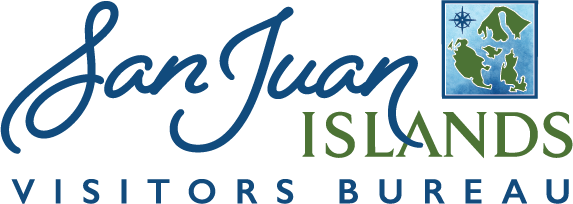
Experience Washington's coastal wildlife and scenery from a spectacular sea-level perspective. As you paddle the rocky shorelines and coves, listen to the waves lapping and search for water-dwelling creatures—orca whales, sea lions, seals, porpoises, otters, starfish, anemones, sea urchins, sea cucumbers, and even octopus (for orca whales, May through September is your best bet).
The San Juan Islands are known for their natural beauty and as a premier kayaking destination. They are also known for sometimes strong and challenging tidal currents, which can present serious risks to inexperienced kayakers and paddle boarders. Protected bays can be easily enjoyed. Other areas should be approached with caution.
Make sure to follow the Kayak Education & Leadership Program (K.E.L.P) guidelines for safe and sustainable kayaking.
Let us acknowledge that we reside on the ancestral lands and waters of the Coast Salish people who have called this place home since time immemorial and let us honor inherent, aboriginal, and treaty rights that have been passed down from generation to generation.
Paddle your own kayak or set out with one of the many knowledgeable kayaking outfitters on San Juan, Orcas, or Lopez Island for three-hour to three-day (or longer) tours. If you have never been kayaking before, never fear - your friendly kayak guide will give you a quick lesson in how to paddle and how to stay safe before you settle into your vessel. The outfitters also provide all the gear you need. Make sure to bring along sunglasses, a hat, sunscreen, water and wear layered clothing.
Check out the list of kayak outfitters for each island below, and don't miss out on these Gourmet Kayaking Adventures.
To feel like a true island pioneer, go kayaking on Lopez Island. The south side of Lopez is dotted with national wildlife refuge islands, set aside for animals and protected—no people allowed. You can visit dozens of islands, such as Fortress Island, Skull Island and Crab Island. The silence of a kayak’s approach lets you view shoreline habitat and nesting birds without disturbing them.
You can also kayak by putting your vessel in right in Lopez Village in Fisherman Bay, or Otis Perkins County Day Park.
Expansive views are also very accessible from Lopez Island waters—off the southwest or southeast part of the island where Rosario Strait meets the Strait of Juan de Fuca.
The more protected waters of East Sound and West Sound on Orcas Island offer smoother kayaking, a boon for the beginner. With more than 125 miles of shoreline, Orcas offers kayakers a wealth of opportunity.
From the North Shore you can access a number of marine state park islands, such as Sucia, Matia and Patos. Paddle around them and enjoy the shoreline or jump ashore and explore their beautiful trails.
If you have your own kayak, consider visiting the two freshwater lakes in Moran State Park: Cascade Lake (which also has some rentals) and Mountain Lake.
San Juan Island has so many great kayaking sites. On the North side, put in at San Juan County Park, a secluded cove where you can also pitch a tent. To launch your kayak from this popular cove between Memorial Day and Labor Day, first check in with the park manager to purchase a permit ($7 per day/$35 for the season). To receive a permit, you must watch a 15-minute presentation on kayaking safely and how to safely view marine wildlife.
The harbor at Roche Harbor Resort is a great place to take a guided kayak tour, or put your vessel in from one of the docks. Kayak trips from San Juan Island offer unobscured views of the Olympic Mountains and of Vancouver Island, just the other side of the Canadian border.
You have a slightly better chance of spotting an orca whale from your kayak, as the three Southern Resident pods frequent Haro Strait or Boundary Pass.